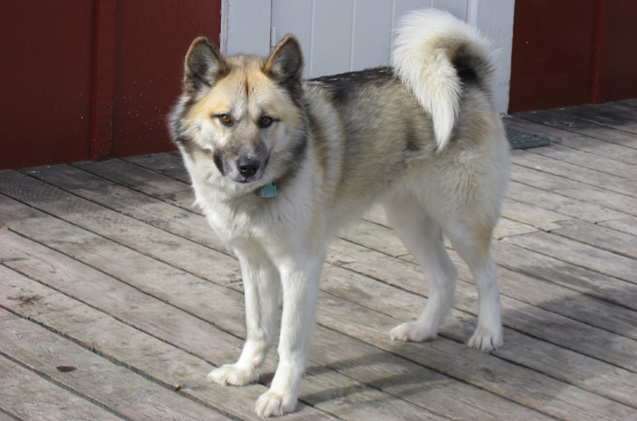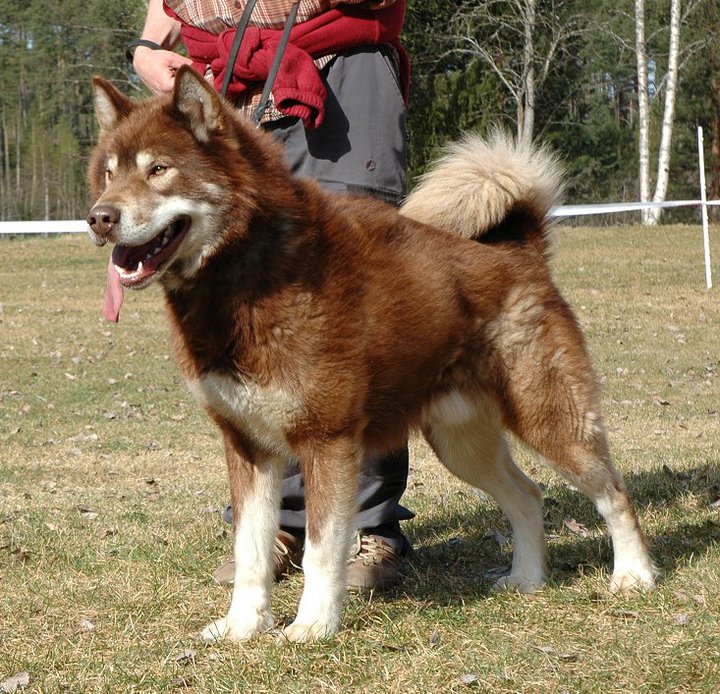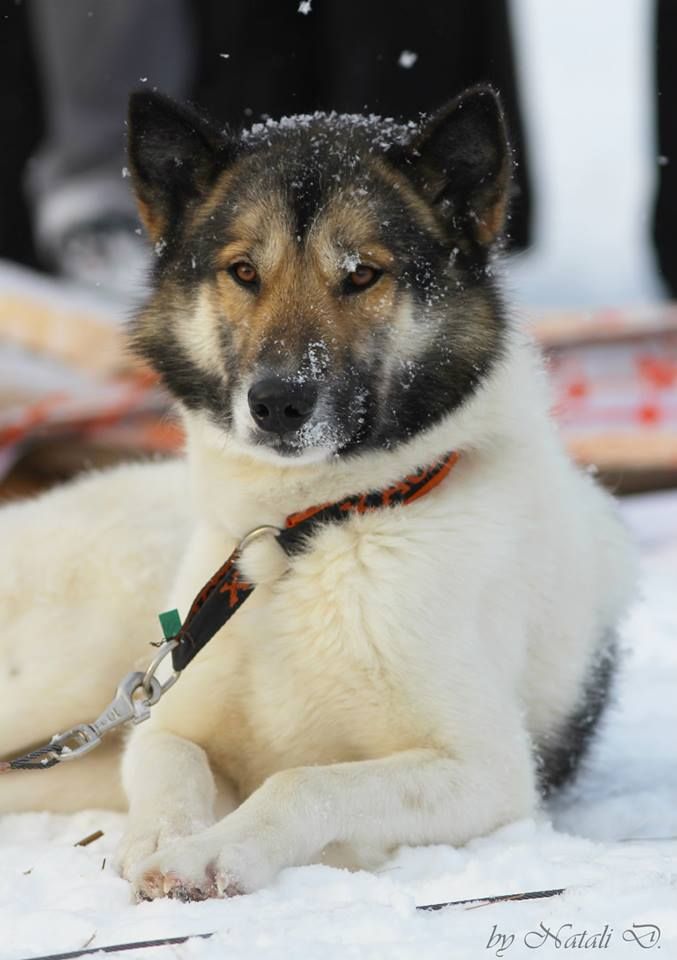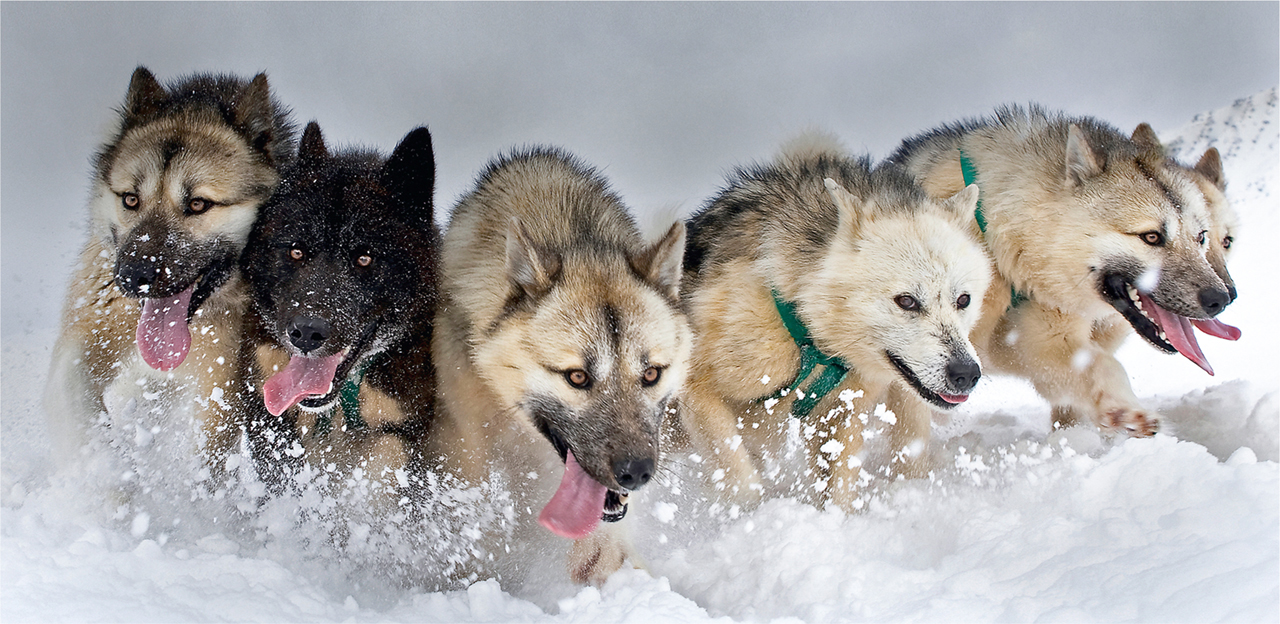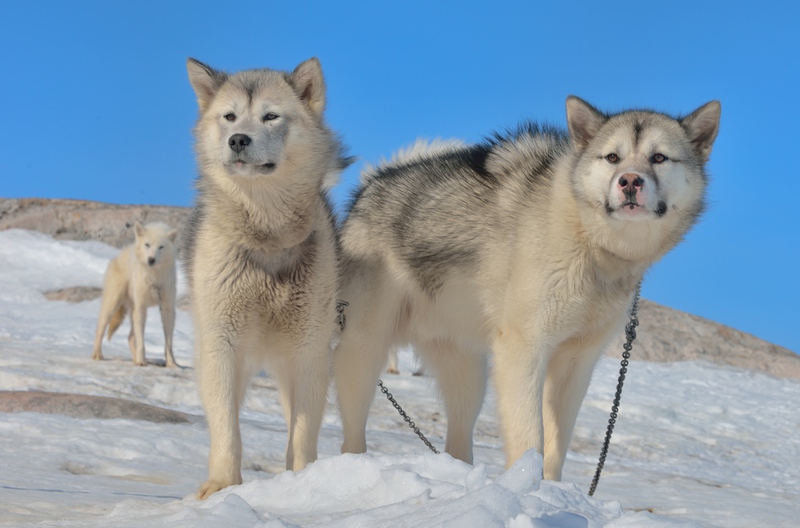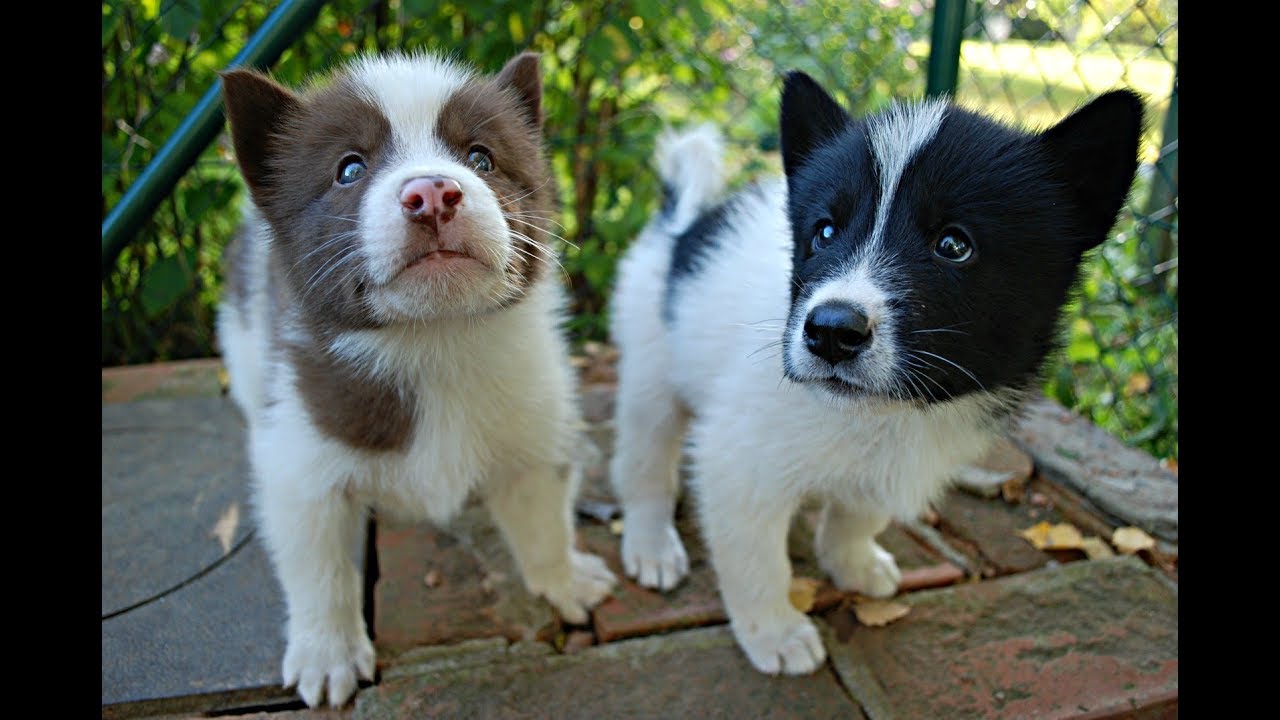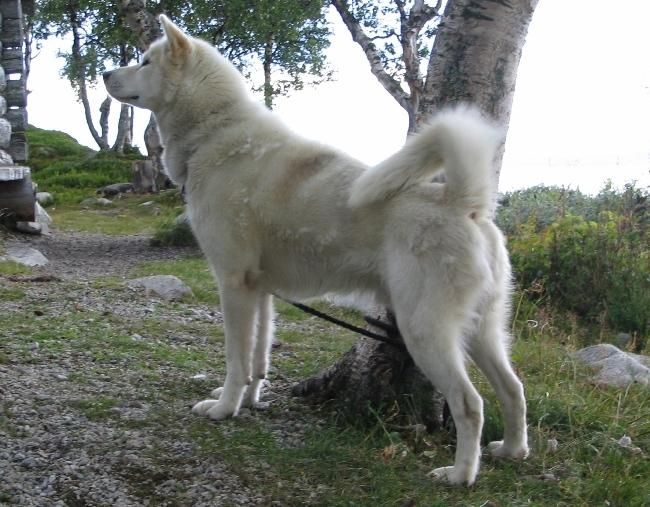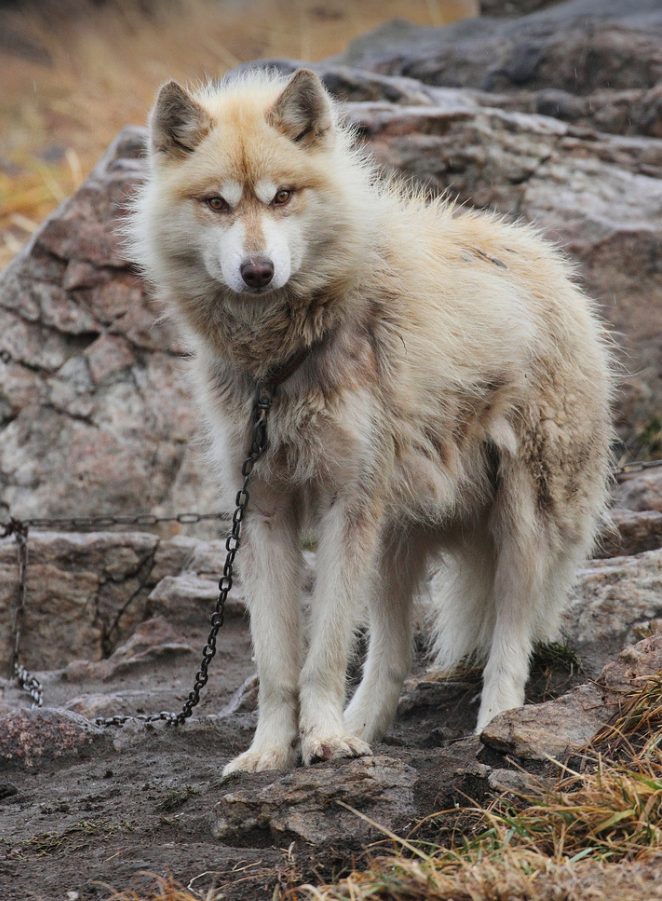Greenland Dog
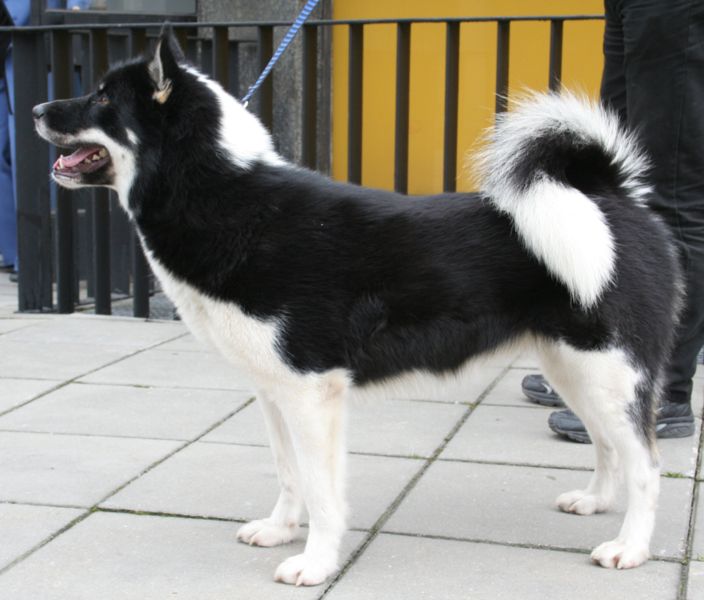
Overview
Greenland Dog: Breed Overview, Characteristics, and Care Guide The Greenland Dog is a strong, resilient breed well-adapted to harsh weather conditions. This breed is not suitable for apartment living, as these dogs need constant activity and are accustomed to pack life. While they are friendly and affectionate with humans, they require a dedicated owner who understands their needs. Before getting a Greenland Dog, it's essential to research the breed’s description, owner reviews, and behavioral challenges.
Breed Characteristics
The Greenland Dog, also known as the Greenlandic Laika, belongs to the Spitz group but is often referred to as "Greenlandshund". It is the only dog breed native to Greenland and has been recognized by the FCI (Fédération Cynologique Internationale). However, it remains one of the rarest breeds, with fewer than 25,000 registered dogs worldwide, even in its homeland. Some Greenland Dogs can also be found in northern Europe, Siberia, and Canada. As a northern sled dog breed, the Greenland Dog is incredibly strong and durable. A team of four dogs can pull up to 200 kg (440 lbs) of cargo across snow. These dogs are enduring and fast, capable of running 160 km (100 miles) in just 18 hours. They possess a keen sense of smell, excellent hearing, and strong spatial awareness.
Key Attributes of the Greenland Dog:
- Brave and resilient – used for hunting reindeer, bears, seals, and other Arctic animals.
- Ideal for sled racing – frequently used in dog sled competitions.
- Not suitable for obedience training – they are independent thinkers, not easily trainable for sports requiring strict discipline.
- Not a watchdog or companion dog – lacks guarding instincts and struggles in warm climates.
Pros and Cons of the Greenland Dog
Pros
- Well-adapted to Arctic climates
- Balanced and calm temperament
- Friendly and sociable
- Highly active and hardworking
- Gets along well with other dogs
- Low-maintenance grooming
- Strong immune system and overall good health
Cons
- Requires intense physical activity
- Cannot tolerate temperatures above +20°C (68°F)
- Loves howling, especially at night
- Has a strong tendency to escape
- Not suitable for apartment living
- Not a guard dog or companion breed
Breed History and Origins
The Greenland Dog is one of the oldest sled dog breeds, with origins dating back over 5,000 years.
- Some researchers believe they originated in Siberia and were brought to Greenland, based on their similarity to Eskimo Laikas.
- Others suggest that Greenland Dogs descended from Arctic wolves, resulting in their stamina and strong pack mentality.
This breed was never selectively bred but developed naturally in harsh Arctic conditions. It gained international recognition in the mid-20th century after being introduced to Europe following an Arctic expedition. The FCI officially recognized the breed, but due to its specialized role and unsuitability for warm climates, it has remained relatively rare. Appearance and Breed Standard The modern breed standard was established in 1997. The Greenland Dog is a medium-sized, powerfully built dog with a rectangular body structure and a thick, double-layered coat.
Key Physical Traits:
- Large head, slightly domed forehead, wedge-shaped muzzle
- Moderately pronounced stop, straight nasal bridge, large nose
- Thin, tight-fitting lips; strong jaws
- Small, triangular ears, set high and widely spaced, with upright tips
- Dark, oval-shaped eyes, set wide apart with a slightly slanted appearance
- Short, muscular neck
- Straight back with a sloping croup
- Fluffy tail, curled over the back
- Deep, broad chest
- Straight, muscular legs, large, round paws
- Thick, straight outer coat with a dense, soft undercoat
- Medium-length fur, shorter on the face, ears, and legs
- Solid or bicolor coat, but never pure white. Any color combination is acceptable.
Temperament and Behavior
The Greenland Dog has a unique personality. It is:
- Calm, balanced, and friendly – never aggressive toward people.
- Highly independent and confident – used to making its own decisions.
- Work-oriented and eager to help – but sees humans as partners rather than masters.
- Not particularly affectionate – forms bonds with humans but does not rely on them.
- Not a playmate for children – tolerant but uninterested in games.
Behavioral Characteristics:
- Prefers pack life – thrives with other dogs but enjoys accompanying an active owner.
- Very vocal – expresses emotions through barking, howling, and whining.
- Strong hunting instincts – will chase cats, birds, and even small dogs.
- Independent and stubborn – similar to wolves, obeys only a strong pack leader.
- Requires early socialization and training – owners must establish authority.
While obedient during sled races or work, Greenland Dogs may ignore commands in everyday life. They require consistent training without harsh discipline. Care and Maintenance The Greenland Dog is an outdoor breed, best suited for life in a kennel or fenced yard. It thrives in cold temperatures and can even sleep in the snow. Ideally, it should be kept in a group, as it is used to pack living.
- Not recommended for urban apartments – confined spaces lead to destructive behavior.
- Must be monitored – strong escape tendencies.
- Minimal grooming required – brushing 2–3 times per month.
- Heavy shedding during molting seasons – frequent brushing needed.
- Avoid frequent bathing – washing too often removes the natural protective oils.
- Teeth, ears, and eyes should be checked regularly.
- High-protein diet is essential – diet should consist of at least ⅔ meat with grains and dairy as supplements.
Health and Lifespan
Greenland Dogs are generally healthy and have a lifespan of 13–14 years. However, they are prone to:
- Gastric torsion (bloat)
- Hip dysplasia
- Hypothyroidism
- Progressive retinal atrophy
- Allergies
How to Buy a Greenland Dog Puppy
Finding a purebred Greenland Dog puppy is difficult. They are primarily bred in northern regions, including Greenland, Scandinavia, and Canada. When purchasing a Greenland Dog, it’s essential to verify all documents and ensure the puppy meets breed standards. Heterochromia (different-colored eyes) is common in sled dogs but is not allowed for Greenland Dogs. The Greenland Dog is a unique, ancient sled dog with remarkable strength and endurance. It is not a pet for everyone – this breed requires space, a cold climate, and an experienced owner. While affectionate and loyal, it is independent and driven by work. If you’re looking for a devoted working dog, the Greenland Dog may be the perfect choice!
Breed Information
| Popularity: | # |
| Origin: | Denmark Greenland |
| Breed Group: | Northern Breeds (UKC) |
| Size: | Medium to Large |
| Type: | Purebred |
| Life span: | 12-14 years |
| Temperament: | Energetic Boldness Independent Loyal Friendly |
| Height: | 22-25 inches (56-64 cm) |
| Weight: | 66-70 pounds (30-32 kg) |
| Colors: | Black Gray White |
| Litter Size: | 4-6 puppies |
| Puppy Price: | Average $500 - $800 USD |
Breed Characteristics
| Adaptability: |
|
| Apartment Friendly: |
|
| Cat Friendly: |
|
| Child Friendly: |
|
| Grooming: |
|
| Health Issues: |
|
| Intelligence: |
|
| Trainability: |
|
| Watchdog Ability: |
|
Dog names
| Rank | Male | Female |
|---|---|---|
| 1 | Milo | Penny |
| 2 | Winston | Ginger |
| 3 | Murphy | Ruby |
| 4 | Sam | Annie |
| 5 | Sammy | Layla |
| 6 | Gizmo | Lexi |
| 7 | Loki | Holly |
| 8 | George | Sandy |
| 9 | Tyson | Scout |
| 10 | Tank | Callie |
| 11 | Hunter | Willow |
| 12 | Peanut | Trixie |
| 13 | Rudy | Katie |
| 14 | Sparky | Shadow |
| 15 | Chester | Madison |


